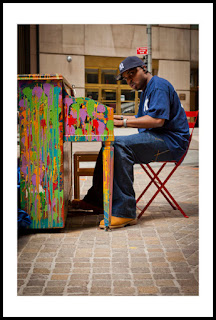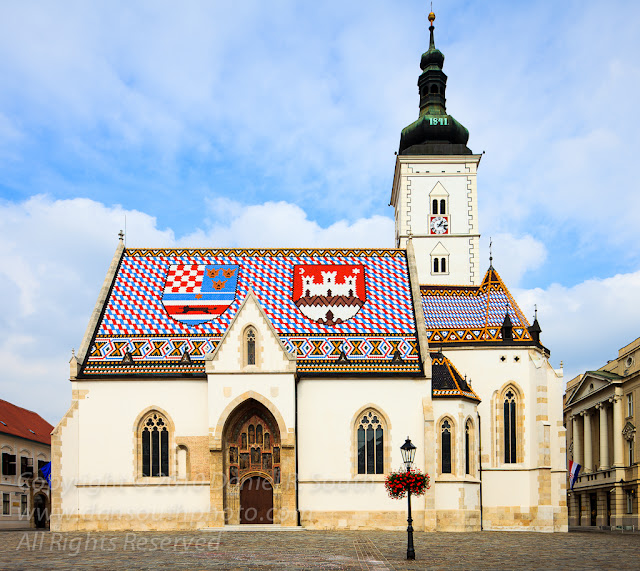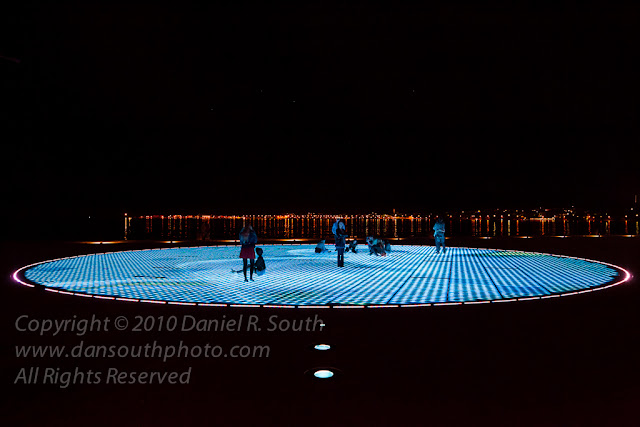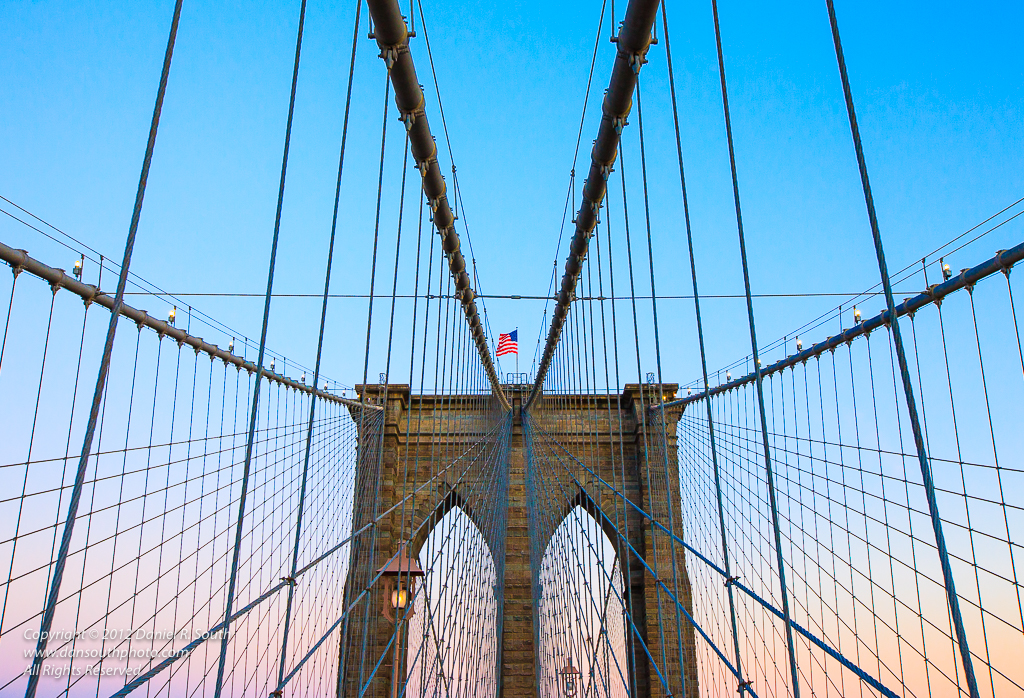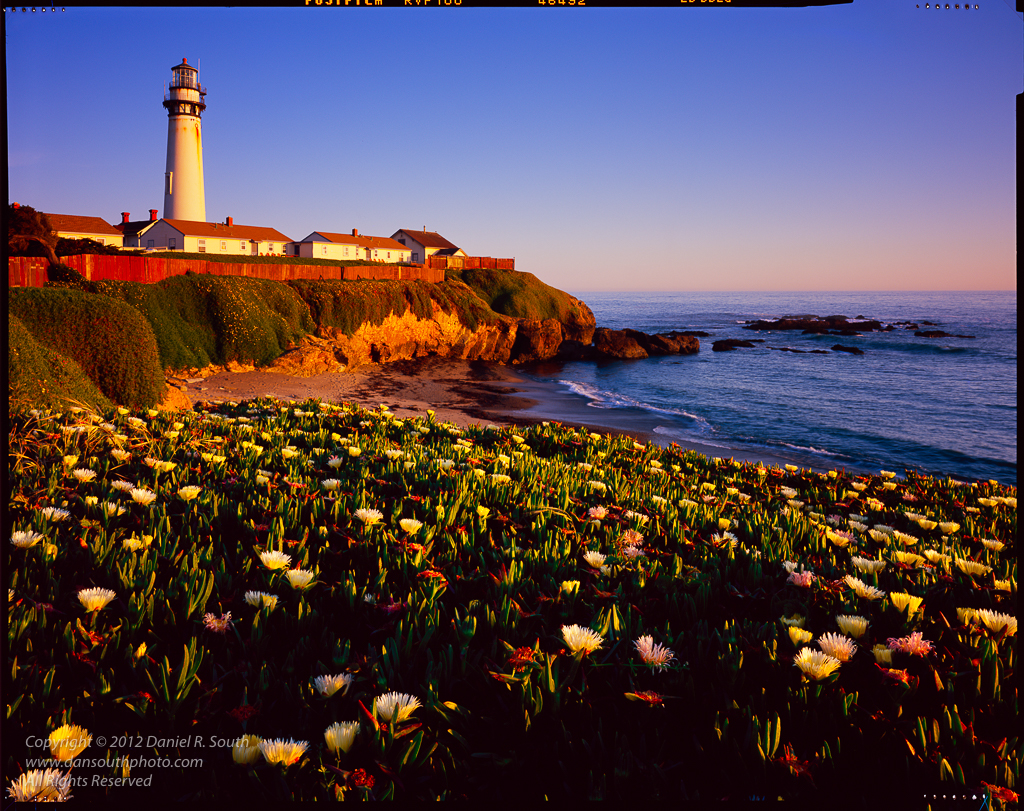Exploring Photo Opportunities Close To Home
Someone once said: "You can make good photographs anywhere. You can even make good photographs in New Jersey."
I laughed when I head this quote. It seems like yet another good-natured Jersey joke, but it also contains valuable wisdom for photographers and artists in all genres.
We don't need to visit exotic, far-away places in order to make appealing images. We can find worthwhile photographic opportunities near home no matter where we live - even if we live in New Jersey (as I did for many years).
Working close to home has notable advantages.
It affords us the ability to visit locations again and again. If a subject doesn't work well in the morning, we can come back and photograph it again in the evening. If not in summer, try again in the winter or spring. If the flowers aren't blooming or the trees haven't changed color yet, we can try again next week. We can shoot familiar locations in all sorts of weather conditions.
Plus don't forget that shooting locally is cheaper than flying, and you don't have to take off your belt and shoes.
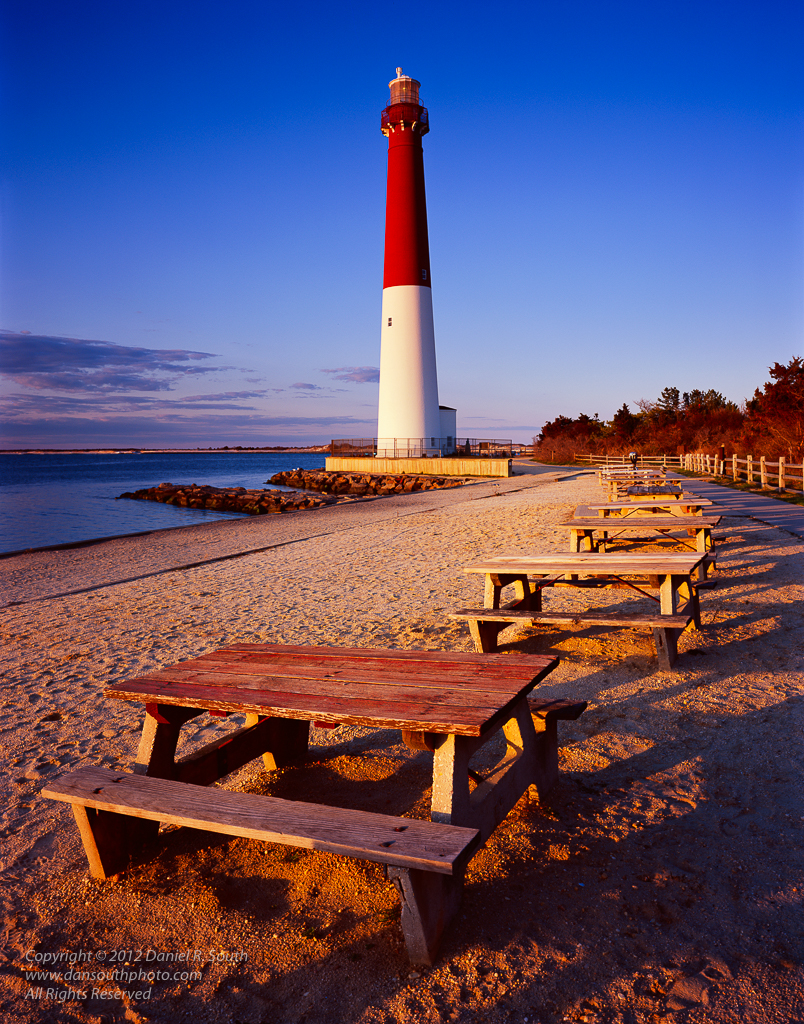 |
| Barnegat Light - Long Beach Island - New Jersey |
This photo of Barnegat Lighthouse is a great example. I visited the lighthouse many times over the course of several years before I worked out the exact combination of camera, lens, light, and weather that I'd need to capture my vision. On many days, the light was a complete bust. Either I'd gotten there too late, or it was blocked by haze or clouds in the western sky. In fact, I had driven to the lighthouse one day before taking this photo and came away with nothing. But the next day everything finally came together.
Luckily, nobody had stolen the red picnic table in the meantime. ;-)
 |
| Marshland At Sunset - Sandy Hook National Recreation Area |
An even less likely candidate for an artistic image is this marshland at Sandy Hook. A hazy summer sky blocked most of the 'good' light on this particular day, but somehow it produced a dramatic and colorful sunset. The marsh waters reflected the color of the sky.
Note that no color filters were used to capture this shot. I didn't add any red or purple - that's the color of the sky captured directly onto a nice big piece of film.
I had made frequent trips to Sandy Hook throughout the year (braving swarms of aggressive mosquitoes and midges in the warmer months). I kept track of what the light was doing in a number of locations. On the day that the magic happened, I was ready. I knew instinctively where to go to get the shot.
 |
| Chapel - Fort Hancock - Sandy Hook National Recreation Area |
The chapel at Fort Hancock isn't a particularly impressive structure, but one day the setting sun gave it a warm glow. I took special steps to match the exposure of the white building with the darker grass.
 |
| Officer's Row House - Fort Hancock - New Jersey |
If I were to select one image that summarizes everything that I've learned about photography over the years, this photo of an Officer's House at Fort Hancock would be on my short list. I won't go into great detail, but an awful lot of work and planning (and luck!) went into creating this shot.
For instance, this side of the building receives direct sunlight only two weeks out of the year. I knew the kind of shot that I wanted to make, but I had to wait for the planet to get into position before I could take it. That requires scouting, planning, and a measure of tenacity.
The exposure required techniques that I developed over years of practice. I used my view camera to eliminate distortion of the architectural details. The placement of the building, tree, and horizon line illustrate key elements of my compositional philosophy.
Finally, as for the windswept clouds and the con trails that match the slope of the roof precisely - let's just say that I've learned to recognize when the Good Lord is being kind to me, and I do everything in my power to avoid wasting those opportunities.
My sincere advice to any aspiring photographer would be to take your camera out and shoot something close to home. Then go back and shoot it again and again until you hit on just the right combination of elements. Familiar places can produce spectacular images when we photograph them at the right moment and under the right conditions.
Camera:
Ebony SV45TE view camera
Nikon NIKKOR-SW 90mm f/4.5
Schneider APO-Symmar-L 150mm f/5.6
Film:
Fujifilm Velvia 100
(No digital cameras were harmed during the making of this post.)
Wishing you great light and meaningful moments!
Copyright © 2012 Daniel R. South












